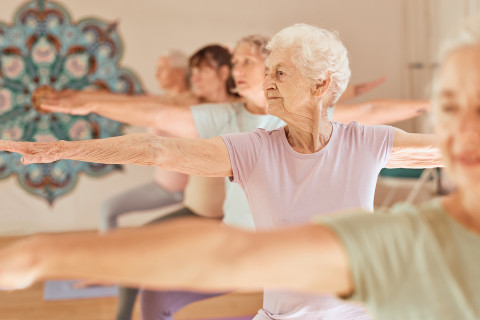The doctoral dissertation in the field of Medicine will be examined at the Faculty of Health Sciences at Kuopio campus. The public examination will be streamed online.
What is the topic of your doctoral research? Why is it important to study the topic?
In my research, I investigated physical capacity and its association with various outcomes in older Finnish women. Healthcare has made vast strides in the last few decades which has enabled people to enjoy longer lives. In Finland, in 2021, people aged 65 and above comprised 23% of the population, compared to 9.8% in 1972. With an aging population comes the challenge of maintaining good health through the later years of a person’s life. Good physical capacity is important for maintaining physical function in older age. With independent functioning comes greater well-being. Keeping this in mind, we wanted to investigate how physical capacity is associated with fractures and subjective well-being in the older population.
What are the key findings or observations of your doctoral research?
Current practice in sarcopenia diagnostics is to adjust muscle mass with height. However, we found that unadjusted muscle mass associates better with physical function measures and adjusting muscle mass for height may not be necessary. In order to validate the results, further studies are needed which include outcomes measures other than muscle strength.
We observed that postural sway (balance while standing) is associated with an increased osteoporotic and overall fracture risk in older women. The risk was significant even after adjusting for well established fracture risk factors. Based on these results, incorporating postural sway into fracture risk assessment protocols may improve their accuracy.
We also found that physical capacity (muscle strength and balance) does not directly associate with life satisfaction in older women. It is however associated with self-rated mobility. Self-rated health was strongly associated with life satisfaction. Therefore, when it comes to subjective wellbeing in older women, self-rated measures of health are better at describing overall state as compared to direct measures of physical capacity. However, the indirect effect of physical capacity measures on life satisfaction still needs to be studied.
What are the key research methods and materials used in your doctoral research?
We carried out three epidemiological studies, utilizing data from Kuopio Osteoporosis Risk Factor and Prevention (OSTPRE) study, and the Kuopio Sarcopenia Reference Population (KSRP). OSTPRE was initiated in 1989 to investigate the factors associated with bone loss, falls and fractures in a target population of 14,220 peri-postmenopausal women. KSRP cohort comprises of 400 healthy female students and personnel of the University of Eastern Finland. Physical capacity measurements such as grip strength, knee extension strength, one-legged stance test and static postural sway were included in our studies. Bone density was measured using dual-energy X-ray absorptiometry (DEXA).
The doctoral dissertation of Sarang Latif Qazi, MBBS, MPH, entitled Physical capacity, musculoskeletal health and well-being in postmenopausal women will be examined at the Faculty of Health Sciences at Kuopio campus. The Opponent in the public examination will be Professor Timo Strandberg of the University of Helsinki, and the Custos will be Professor Joonas Sirola of the University of Eastern Finland.
For further information, please contact:
MBBS, MPH, Sarang Latif Qazi, sarangq(a) uef.fi, 0452364623



